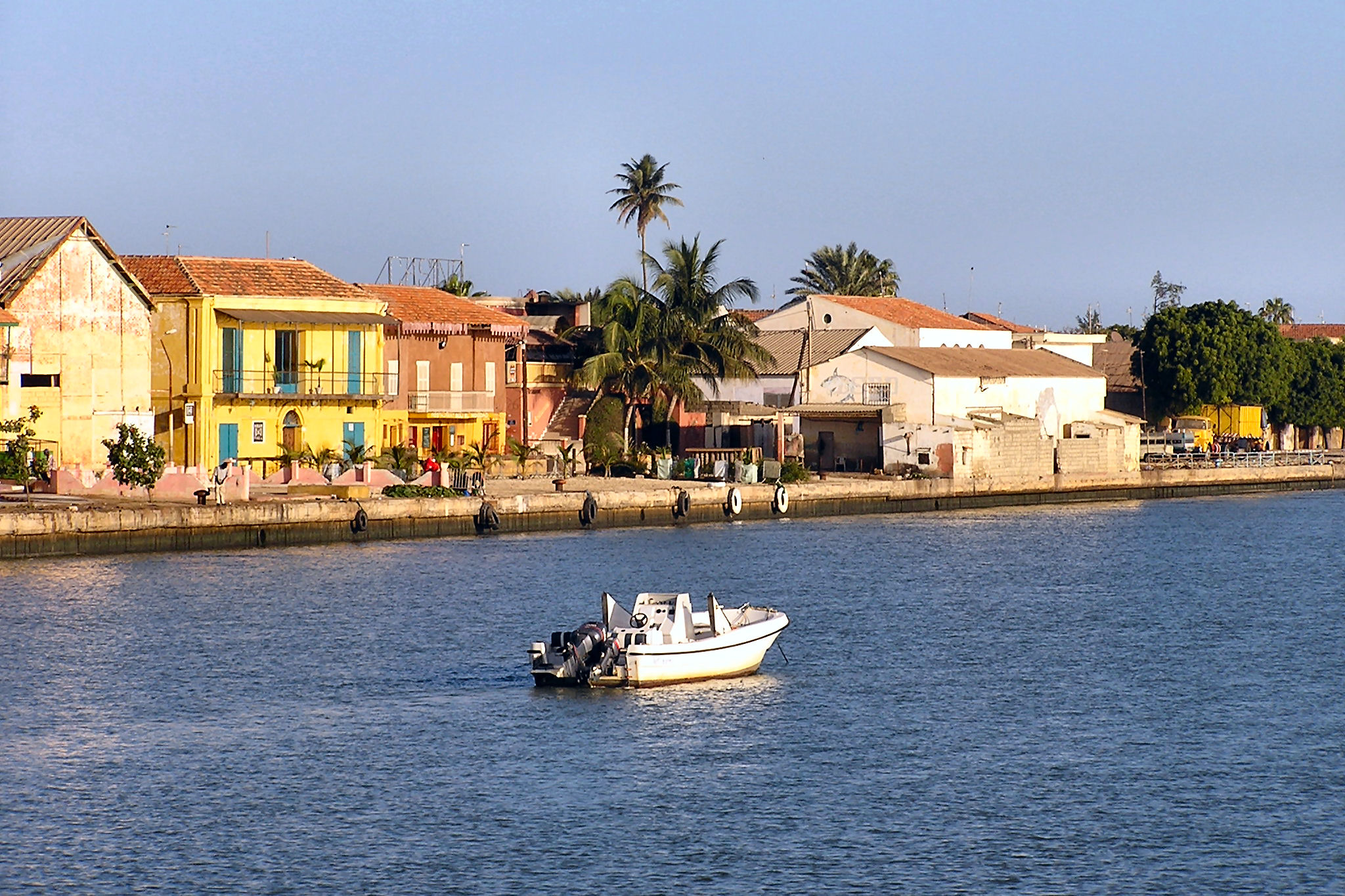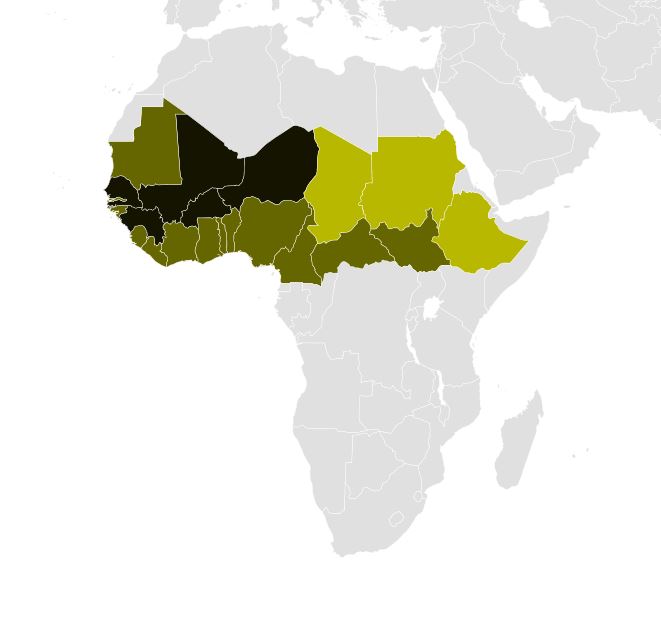|
Mboubène
Mboubène is a town in the lower delta of the Senegal River, near the mouth of the Marigot de Djeuss. The town is located on the main highway to the Maka-Diama Dam at a distance of from the coastal city of Saint-Louis, Senegal. On French and Dutch maps, the name of the town has been spelled variously, including "MBoulene" and "Emboulan." It was called "Biffeche-Ville" during the period of the 1960s through the 1980s when it was inhabited by resettled members of the Sèrèer ethnic group. (The Sèrèers moved away to the nearby town of Savoigne.) Today, Mboubène consists of two parts: Al Madinatoul Islamiah Mboubène Peulh inhabited by Fula people,An ethnicity known in French as ''Peulh'' or ''Peul'', and in Fula as ''Fulɓe''. and Mboubène Naar primarily inhabited by Moors The term Moor is an Endonym and exonym, exonym used in European languages to designate the Muslims, Muslim populations of North Africa (the Maghreb) and the Iberian Peninsula (particularly al-Anda ... [...More Info...] [...Related Items...] OR: [Wikipedia] [Google] [Baidu] |
Senegal River
The Senegal River ( or "Senegal" - compound of the Serer term "Seen" or "Sene" or "Sen" (from Roog Seen, Supreme Deity in Serer religion) and "O Gal" (meaning "body of water")); , , , ) is a river in West Africa; much of its length marks part of the border between Senegal and Mauritania. It has a drainage basin of , a mean flow of , and an annual discharge of . Important tributaries are the Falémé River, Karakoro River, and the Gorgol River. The river divides into two branches once it passes Kaédi. The left branch, called the Doué, runs parallel to the main river to the north. After the two branches rejoin a few kilometers downstream of Podor. In 1972 Mali, Mauritania and Senegal founded the Organisation pour la mise en valeur du fleuve Sénégal (OMVS) to manage the river basin. Guinea joined in 2005. , only very limited use was made of the river for the transportation of goods and passengers. The OMVS have looked at the feasibility of creating a navigable ... [...More Info...] [...Related Items...] OR: [Wikipedia] [Google] [Baidu] |
Marigot De Djeuss
The French name Marigot is given to several places in the Caribbean: *Marigot, Dominica, a village in Dominica * Marigot, Grenada, a village in Grenada *Marigot, Saint Martin, the largest settlement on the French side of Saint Martin (Saint-Martin) * Marigot, Saint Barthélemy, a village in Saint Barthélemy * Marigot Bay, Saint Lucia *Le Marigot Le Marigot (; ) is a village and commune in the French overseas department of Martinique. Population See also *Communes of Martinique A commune is an alternative term for an intentional community. Commune or comună or comune or other deriva ..., a canton in Martinique's La Trinité arrondissement * Marigot, Sud-Est, a beach commune east of Jacmel, Haiti {{geodis ... [...More Info...] [...Related Items...] OR: [Wikipedia] [Google] [Baidu] |
Maka-Diama Dam
The Diama Dam, sometimes referred to as the Maka–Diama Dam ( French: ''Barrage de Maka-Diama'') is a gravity dam on the Senegal River, spanning the border of Senegal and Mauritania. It is located next to the town of Diama, Senegal and about north of Saint-Louis, Senegal. The purpose of the dam is to prevent saltwater intrusion upstream, supply water for the irrigation of about of crops and create a road crossing for the road between St. Louis and Nouakchott in Mauritania. Additionally, a ship lock built within the dam provides for navigation upstream. Plans for the dam were first drawn in 1970 when the riparian states within the Senegal River Basin Development Authority agreed to develop the Senegal River. The Diama Dam was to be constructed in conjunction with the Manantali Dam which was to be located further upstream in Mali. Construction on the Diama Dam began on 15 September 1981 and was completed on 12 August 1986. The Manantali Dam was completed in 1988. The Diama proje ... [...More Info...] [...Related Items...] OR: [Wikipedia] [Google] [Baidu] |
Saint-Louis, Senegal
Saint-Louis () or Saint Louis (), is the capital of Senegal's Saint-Louis Region. Located in the northwest of Senegal, near the mouth of the Senegal River, and north of Senegal's capital city Dakar. It had a population of 254,171 in 2023. Saint-Louis was the capital of the French colony of Senegal from 1673 until 1902 and French West Africa from 1895 until 1902, when the capital was moved to Dakar. From 1920 to 1957, it also served as the capital of the neighboring colony of Mauritania. The town was an important economic center during the period of French West Africa, but it is less important now. Nonetheless, it still has important industries, including tourism, a commercial center, sugar production, and fishing. The tourism industry is in part due to the city being listed as a UNESCO World Heritage Site in 2000. However, the city is also Climate change vulnerability, vulnerable to climate change—where sea level rise is expected to threaten the city center and potentially damag ... [...More Info...] [...Related Items...] OR: [Wikipedia] [Google] [Baidu] |
Sereer
The Serer people ('' Serer proper'': Seereer or Sereer) are a West African ethnoreligious groupGastellu, Jean-Marc, ''Petit traité de matrilinarité. L'accumulation dans deux sociétés rurales d'Afrique de l'Ouest'', Cahiers ORSTOM, série Sciences Humaines 4 (1985) nGastellu, Jean-Marc, ''Matrilineages, Economic Groups and Differentiation in West Africa: A Note'', O.R.S.T.O.M. Fonds Documentaire (1988), pp 1, 2–4 (pp 272–4), 7 (p 277/ref> Marguerite Dupire, Dupire, Marguerite, ''Sagesse sereer: Essais sur la pensée sereer ndut'', KARTHALA Editions (1994). For ''tim'' and ''den yaay'' (see p. 116). The book also deals in depth about the Serer matriclans and means of succession through the matrilineal line. See pp. 38, 95–99, 104, 119–20, 123, 160, 172–74,/ref> They fought against jihads in the 19th century, and subsequently opposed French colonial rule - resulting in Serer victory at the famous Battle of Djilass (13 May 1859), and the French Empire taking revenge a ... [...More Info...] [...Related Items...] OR: [Wikipedia] [Google] [Baidu] |
Fula People
The Fula, Fulani, or Fulɓe people are an ethnic group in Sahara, Sahel and West Africa, widely dispersed across the region. Inhabiting many countries, they live mainly in West Africa and northern parts of Central Africa, South Sudan, Darfur, and regions near the Red Sea coast in Sudan. The approximate number of Fula people is unknown, due to clashing definitions regarding Fula ethnicity. Various estimates put the figure between 25 and 40 million people worldwide. A significant proportion of the Fula – a third, or an estimated 7 to 10 million – are pastoralism, pastoralists, and their ethnic group has the largest nomadic pastoral community in the world., Quote: The Fulani form the largest pastoral nomadic group in the world. The Bororo'en are noted for the size of their cattle herds. In addition to fully nomadic groups, however, there are also semisedentary Fulani – Fulbe Laddi – who also farm, although they argue that they do so out of necessity, not choice. The major ... [...More Info...] [...Related Items...] OR: [Wikipedia] [Google] [Baidu] |
French Language
French ( or ) is a Romance languages, Romance language of the Indo-European languages, Indo-European family. Like all other Romance languages, it descended from the Vulgar Latin of the Roman Empire. French evolved from Northern Old Gallo-Romance, a descendant of the Latin spoken in Northern Gaul. Its closest relatives are the other langues d'oïl—languages historically spoken in northern France and in southern Belgium, which French (Francien language, Francien) largely supplanted. It was also substratum (linguistics), influenced by native Celtic languages of Northern Roman Gaul and by the Germanic languages, Germanic Frankish language of the post-Roman Franks, Frankish invaders. As a result of French and Belgian colonialism from the 16th century onward, it was introduced to new territories in the Americas, Africa, and Asia, and numerous French-based creole languages, most notably Haitian Creole, were established. A French-speaking person or nation may be referred to as Fra ... [...More Info...] [...Related Items...] OR: [Wikipedia] [Google] [Baidu] |
Fula Language
Fula ( ),Laurie Bauer, 2007, ''The Linguistics Student's Handbook'', Edinburgh also known as Fulani ( ) or Fulah (, , ; Adlam script, Adlam: , , ; Ajami script, Ajami: , , ), is a Senegambian languages, Senegambian language spoken by around 36.8 million people as a set of various dialects in a Dialect continuum, continuum that stretches across some 18 countries in West Africa, West and Central Africa. Along with other related languages such as Serer language, Serer and Wolof language, Wolof, it belongs to the Atlantic languages, Atlantic geographic group within Niger–Congo languages, Niger–Congo, and more specifically to the Senegambian languages, Senegambian branch. Unlike most Niger-Congo languages, Fula does not have Tone (linguistics), tones. It is spoken as a first language by the Fula people ("Fulani", ) from the Senegambia, Senegambia region and Guinea to Cameroon, Nigeria, and Sudan and by related groups such as the Toucouleur people in the Senegal River Valley ... [...More Info...] [...Related Items...] OR: [Wikipedia] [Google] [Baidu] |
Moors
The term Moor is an Endonym and exonym, exonym used in European languages to designate the Muslims, Muslim populations of North Africa (the Maghreb) and the Iberian Peninsula (particularly al-Andalus) during the Middle Ages. Moors are not a single, distinct or Ethnonym, self-defined people. Europeans of the Middle Ages and the early modern period variously applied the name to Arabs, Berbers, and Islam in Europe, Muslim Europeans. The term has been used in a broader sense to refer to Muslims in general,Menocal, María Rosa (2002). ''Ornament of the World: How Muslims, Jews and Christians Created a Culture of Tolerance in Medieval Spain''. Little, Brown, & Co. , p. 241 especially those of Arab or Berber descent, whether living in al-Andalus or North Africa. The 1911 ''Encyclopædia Britannica'' observed that the term had "no real ethnological value." The word has racial connotations and it has fallen out of fashion among scholars since the mid-20th century. The word is also used ... [...More Info...] [...Related Items...] OR: [Wikipedia] [Google] [Baidu] |




